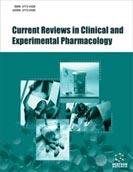Abstract
In Covid-19 cases, elderly patients in long-term care facilities, children younger than five years with moderate symptoms, and patients admitted to ICU or with comorbidities are at a high risk of coinfection, as suggested by the evidence. Thus, in these patients, antibiotic therapy based on empirical evidence is necessary. Finding appropriate antimicrobial agents, especially with antiviral and anti-inflammatory properties, is a promising approach to target the virus and its complications, hyper-inflammation, and microorganisms resulting in co-infection. Moreover, indiscriminate use of antibiotics can be accompanied by Clostridioides difficile colitis, the emergence of resistant microorganisms, and adverse drug reactions, particularly kidney damage and QT prolongation. Therefore, rational administration of efficient antibiotics is an important issue. The main objective of the present review is to provide a summary of antibiotics with possible antiviral activity against SARS-CoV-2 and anti-immunomodulatory effects to guide scientists for further research. Besides, the findings can help health professionals in the rational prescription of antibiotics in Covid-19 patients with a high risk of co-infection.
Keywords: COVID-19, antibiotics, SARS-CoV-2, pneumonia, co-infection, antimicrobial resistance.
Graphical Abstract
[http://dx.doi.org/10.7759/cureus.7423] [PMID: 32337143]
[http://dx.doi.org/10.1016/S0140-6736(20)30183-5] [PMID: 31986264]
[http://dx.doi.org/10.1001/jama.2020.1585] [PMID: 32031570]
[http://dx.doi.org/10.1016/S0140-6736(20)30211-7] [PMID: 32007143]
[http://dx.doi.org/10.1007/s00253-020-10814-6] [PMID: 32780290]
[http://dx.doi.org/10.1016/j.cmi.2020.07.016] [PMID: 32711058]
[http://dx.doi.org/10.1101/cshperspect.a025247] [PMID: 27329032]
[http://dx.doi.org/10.1074/jbc.M116.716100] [PMID: 26953343]
[http://dx.doi.org/10.26434/chemrxiv.12228831.v1]
[PMID: 32538276]
[http://dx.doi.org/10.20944/preprints202004.0146.v1]
[http://dx.doi.org/10.1080/07391102.2020.1764392]
[http://dx.doi.org/10.1016/j.ijantimicag.2020.106053] [PMID: 32534189]
[http://dx.doi.org/10.4103/2225-6482.141746]
[http://dx.doi.org/10.1155/1993/168061] [PMID: 22346438]
[http://dx.doi.org/10.1128/CMR.00078-09] [PMID: 20610825]
[http://dx.doi.org/10.1016/j.clim.2020.108393] [PMID: 32222466]
[http://dx.doi.org/10.1016/j.resinv.2013.04.002] [PMID: 24238234]
[http://dx.doi.org/10.1016/j.antiviral.2019.104591] [PMID: 31421167]
[http://dx.doi.org/10.1371/journal.pone.0029879] [PMID: 22396727]
[http://dx.doi.org/10.1097/01.qco.0000160901.71813.fe] [PMID: 15735416]
[http://dx.doi.org/10.1371/journal.pone.0070060] [PMID: 23875018]
[http://dx.doi.org/10.1001/jamacardio.2020.1834] [PMID: 32936252]
[http://dx.doi.org/10.1038/s41598-021-86321-z] [PMID: 33767276]
[http://dx.doi.org/10.1101/2020.04.27.20074583]
[http://dx.doi.org/10.1002/jmv.27259] [PMID: 34370328]
[http://dx.doi.org/10.1002/cpt.1857] [PMID: 32302411]
[http://dx.doi.org/10.1128/AAC.00852-06] [PMID: 17060516]
[http://dx.doi.org/10.1128/AAC.02011-12] [PMID: 23357769]
[http://dx.doi.org/10.1016/j.ejps.2010.05.016] [PMID: 20621639]
[http://dx.doi.org/10.1128/AAC.47.7.2283-2292.2003] [PMID: 12821480]
[http://dx.doi.org/10.1371/journal.pntd.0000236] [PMID: 18478051]
[http://dx.doi.org/10.1139/cjpp-2019-0569] [PMID: 32125889]
[http://dx.doi.org/10.1128/AAC.48.3.809-814.2004] [PMID: 14982769]
[http://dx.doi.org/10.1016/S1734-1140(09)70140-9] [PMID: 19904007]
[http://dx.doi.org/10.1208/s12248-020-00465-w] [PMID: 32533263]
[http://dx.doi.org/10.2147/IDR.S187226] [PMID: 30881064]
[http://dx.doi.org/10.2147/DDDT.S166893] [PMID: 29928112]
[http://dx.doi.org/10.2307/30147135] [PMID: 1320067]
[http://dx.doi.org/10.1016/S0002-9343(00)00329-6] [PMID: 10781777]
[http://dx.doi.org/10.1006/bbrc.1999.1917] [PMID: 10623585]
[http://dx.doi.org/10.1016/j.tibs.2018.06.011] [PMID: 30054232]
[http://dx.doi.org/10.1016/S1473-3099(20)30132-8] [PMID: 32113509]
[http://dx.doi.org/10.1155/2012/649570] [PMID: 22719178]
[http://dx.doi.org/10.1186/s12941-020-00358-y] [PMID: 32331519]
[http://dx.doi.org/10.1128/JVI.01564-16] [PMID: 28148786]
[http://dx.doi.org/10.1002/hep.20069] [PMID: 14767979]
[http://dx.doi.org/10.1111/jdv.14345] [PMID: 28516469]
[http://dx.doi.org/10.1016/j.intimp.2005.04.013] [PMID: 16039551]
[http://dx.doi.org/10.1007/s00011-005-1358-5] [PMID: 16134060]
[http://dx.doi.org/10.1111/bcpt.12444] [PMID: 26177421]
[http://dx.doi.org/10.1002/phar.2395] [PMID: 32267566]
[http://dx.doi.org/10.1097/00007691-198206000-00001] [PMID: 7048645]
[http://dx.doi.org/10.1128/AAC.47.11.3630-3633.2003] [PMID: 14576133]
[http://dx.doi.org/10.1002/14651858.CD000245.pub4] [PMID: 28626858]
[PMID: 21436975]
[http://dx.doi.org/10.4103/0971-4065.59333] [PMID: 20535247]
[http://dx.doi.org/10.3389/fmed.2020.00200] [PMID: 32574320]
[http://dx.doi.org/10.1016/j.idcr.2020.e00864] [PMID: 32566483]
[http://dx.doi.org/10.1371/journal.pone.0126360] [PMID: 25970853]
[http://dx.doi.org/10.1093/femsle/fnx170] [PMID: 28903466]
[http://dx.doi.org/10.1016/j.jacc.2020.03.031] [PMID: 32201335]
[http://dx.doi.org/10.1016/j.ijantimicag.2020.105980] [PMID: 32294495]
[http://dx.doi.org/10.1101/2020.05.11.20098525]
[http://dx.doi.org/10.1111/bph.12139] [PMID: 23441623]
[http://dx.doi.org/10.1086/651277] [PMID: 20205570]
[http://dx.doi.org/10.1186/1742-4690-9-16] [PMID: 22335964]
[http://dx.doi.org/10.1016/0923-2516(90)90052-K] [PMID: 2326552]
[http://dx.doi.org/10.1128/mBio.01102-13] [PMID: 24496798]
[http://dx.doi.org/10.1093/jac/dkm207] [PMID: 17586560]
[http://dx.doi.org/10.1016/S0025-7125(16)30039-6] [PMID: 7791423]
[http://dx.doi.org/10.1101/cshperspect.a027029] [PMID: 27252397]
[http://dx.doi.org/10.1128/ecosalplus.ESP-0002-2018] [PMID: 30447062]
[http://dx.doi.org/10.1002/cbic.200900779] [PMID: 20397253]
[http://dx.doi.org/10.7164/antibiotics.40.843] [PMID: 3038817]
[http://dx.doi.org/10.1021/cb400498n] [PMID: 24015986]
[http://dx.doi.org/10.1111/j.1742-4658.2008.06657.x] [PMID: 18803669]
[http://dx.doi.org/10.1039/c2mb25333j] [PMID: 22990985]
[http://dx.doi.org/10.1016/j.antiviral.2009.02.204] [PMID: 19501253]
[http://dx.doi.org/10.1177/095632020801900105] [PMID: 18610556]
[http://dx.doi.org/10.1038/s41564-018-0138-2] [PMID: 29632368]
[http://dx.doi.org/10.1038/s41564-018-0152-4] [PMID: 29693655]
[http://dx.doi.org/10.1016/j.trstmh.2008.09.008] [PMID: 18947845]
[http://dx.doi.org/10.1016/j.ijid.2020.06.063] [PMID: 32579907]
[http://dx.doi.org/10.26434/chemrxiv.12248561.v1]
[http://dx.doi.org/10.26434/chemrxiv.12279671.v1]
[http://dx.doi.org/10.1016/j.arcmed.2020.06.004] [PMID: 32546446]
[http://dx.doi.org/10.1007/978-1-4939-3323-5_8]
[http://dx.doi.org/10.1164/rccm.201908-1581ST] [PMID: 31573350]
[http://dx.doi.org/10.2174/0929867013373435] [PMID: 11172695]
[http://dx.doi.org/10.1159/000334441] [PMID: 22156660]
[http://dx.doi.org/10.1007/s15010-005-8209-8] [PMID: 16518713]
[http://dx.doi.org/10.1007/s43440-020-00169-0] [PMID: 33063271]
[http://dx.doi.org/10.3109/14756360903373350] [PMID: 20235755]
[http://dx.doi.org/10.1007/s10096-014-2296-3] [PMID: 25515946]
[http://dx.doi.org/10.26434/chemrxiv.12136002.v1]
[http://dx.doi.org/10.1007/s12250-020-00203-8] [PMID: 32034637]
[http://dx.doi.org/10.1016/S2213-2600(20)30071-0] [PMID: 32061335]
[http://dx.doi.org/10.5588/ijtld.20.0232] [PMID: 32553001]
[http://dx.doi.org/10.5694/mja2.50577] [PMID: 32266987]
[http://dx.doi.org/10.1586/14787210.1.3.371] [PMID: 15482135]
[http://dx.doi.org/10.1371/journal.pone.0130248] [PMID: 26086073]
[http://dx.doi.org/10.3348/kjr.2020.0157] [PMID: 32174054]
[http://dx.doi.org/10.1097/ACI.0000000000000665] [PMID: 32590503]
[http://dx.doi.org/10.1021/jm0300882] [PMID: 12801238]
[http://dx.doi.org/10.1016/j.ijantimicag.2020.106029] [PMID: 32454071]
[http://dx.doi.org/10.1016/j.ijantimicag.2016.07.004] [PMID: 27546219]
[http://dx.doi.org/10.1101/2020.02.05.935387]
[http://dx.doi.org/10.1007/s10096-019-03652-6] [PMID: 31372903]
[http://dx.doi.org/10.1016/S0738-081X(99)00103-0] [PMID: 10701095]
[http://dx.doi.org/10.1002/jmv.26925] [PMID: 33675235]
[http://dx.doi.org/10.1111/dth.14694] [PMID: 33354849]
[http://dx.doi.org/10.1101/2020.05.30.20117598]
[http://dx.doi.org/10.1093/jac/dkaa194] [PMID: 32433765]
[http://dx.doi.org/10.2471/BLT.20.268573] [PMID: 32742026]
[http://dx.doi.org/10.1111/1751-7915.12755] [PMID: 28677216]
[http://dx.doi.org/10.3390/antibiotics7040110] [PMID: 30558235]





























